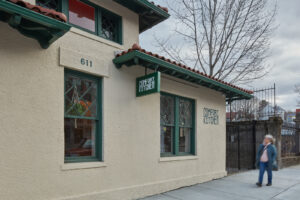
26 Sep Restoration vs. Rehabilitation: What’s the Difference?
Historic Boston’s mission statement says that we redevelop at-risk historic buildings in order to help Boston’s neighborhoods thrive. In introducing the organization to others, we often explain that we don’t create house museums, but rather we find new uses for historic buildings. Our projects are not restorations, but rather rehabilitations, or adaptive reuses. It’s a distinction that most people probably don’t think too much about, but it’s worth explaining the difference.
Restoration
Historic house museums are restorations. The goal of a restoration is to enable visitors to experience the site as it looked in an earlier time. Historic restorations typically choose one period in time to present to the public. Most houses evolve over time, as new owners renovate and adapt spaces to their taste and update with modern amenities and comforts. Ideally, historic houses that are restored as museums have some original architectural and decorative features intact – what those in preservation circles refer to as “historic fabric.” These details may need some TLC or repairs to restore them to their original condition, and newer finishes may need to be removed to bring the property back to its earlier appearance. Old photographs provide insight to a property’s earlier appearance, but because our ancestors didn’t have cell phones with cameras, far fewer photos were taken and such documentation is not always available. Accurate restorations may require some forensic research to determine original appearance, and companies such as Building Conservation Associates might be enlisted to assist with such an investigation to determine such details as original paint colors.
Rehabilitation
Historic Boston’s projects, by contrast, are rehabilitations. Restorations and rehabilitations do have some overlap in their approaches, but there are also some notable differences. Unlike restoration projects, HBI adapts spaces for new uses, so the configuration of the interiors usually change significantly from their original appearance, and several changes must be made to comply with modern building codes. Most of the buildings we acquire are extremely distressed and require structural enhancements and extensive replacement of materials. Many have been exposed to the elements and have suffered water damage. Our challenge is always to identify what original materials – or “character defining features” – to preserve and sometimes replicate within the newly configured spaces.
For example, our recent rehabilitation of the Upham’s Corner Comfort Station transformed the building from its original use as public restrooms to a modern, full service restaurant that required many changes to the space. It now has an ADA compliant bathroom and entrances, and the original public restroom stalls were removed to create a clean, bright, open dining room. However, many of the original diamond pane windows were retained and rebuilt where necessary, and the original distinct but damaged clay roof tiles were replaced with new tiles from the same manufacturer. The original slate bathroom partitions were cleaned, cut and reinstalled as wainscot in the new bathroom. Two small sections of the original restroom tile floor remain at the two building entrances as a reminder of its original use, though most of the original flooring was too damaged to retain.




Similarly, the Alvah Kittredge House rehabilitation converted the severely deteriorated single-family Greek Revival mansion to five new apartments. The original floor to ceiling double hung windows on the front elevation were restored and retained, then made efficient with interior storm windows. Similarly, some of the original wood paneling and the elegant grand staircase in the single family hallway were repaired and restored to be used as common area stairs. The new apartments retain the house’s historic character and many significant features, but the building is now compliant with current codes and fitted with modern amenities appropriate for the change in use.




The decisions we make about what to retain, restore or replace when rehabilitating a building are not made by Historic Boston alone. Most of our projects are funded in part by State and Federal Historic Rehabilitation tax credits, and all of our proposed work on tax credit projects must be reviewed and approved by both the Massachusetts Historical Commission and the National Park Service. The work must adhere to the Secretary of the Interior’s Standards for the Treatment of Historic Properties, which guides both restorations and rehabilitations. This review process can be long and onerous, but in the end ensures the best quality preservation project.



